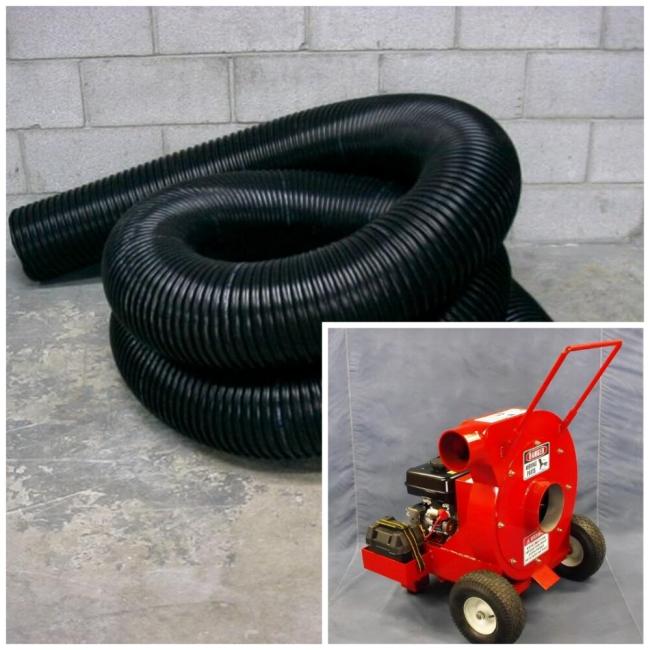The Role Of Hose Sizes In Insulation Removal

Struggling with weak suction? Perhaps the whole process of insulation removal has slowed down for you and you can’t figure out why. A close inspection of your insulation removal vacuum shows that it is working just fine. So what could be the issue?
The fact of the matter is your vacuum is only as good as the hose you attach to it. If your hose set-up is not ideal, you are bound to run into issues during hose removal such as inefficiency, faster equipment wear and slower job completion.
These issues can be fixed if you take hose diameter and length into account as they can strongly influence airflow efficiency, suction power and overall performance. In this blog, we will show you how you can fine-tune your hose set-up for maximum performance.
Impact of Vacuum Hoses on Airflow and Resistance
The basic mechanism of vacuum involves the creation of negative pressure so that debris can be sucked into the hose and then transferred into the collection container, such as an insulation removal vacuum bag. That said, the airflow determines how efficient this process will be, and as mentioned before, the diameter and length of your hose will directly impact efficiency. Here’s how:
- The larger your hose’s diameter, the more air can flow through it, which means a higher CFM (cubic feet per minute) resulting in improved suction power. Conversely, if you use a small hose, the suction power will be significantly lower, leading to reduced performance. That said, it is crucial not to opt for a hose whose diameter is beyond the recommended limit for the vacuum as both air velocity and efficiency can take a hit.
- As for the length of the hose, longer hoses can cause more friction, which in turn reduces suction power while increasing resistance. In fact, every extra foot you add to your hose can increase its energy requirements. Moreover, longer hoses are likely to bend and kink, which can decrease airflow.
How to Choose the Right-Sized Hose
The ideal diameter of a hose that is best suited for your insulation removal vacuum is dependent on certain factors such as the CFM or HP rating of the vacuum model you have, the type of insulation you have to remove (from cellulose to blow-in, etc.), and the distance between the job site and where your collection unit is placed.
That said, here’s a hose diameter table that can help you out:
|
Hose Diameter |
Ideal Use Case |
Benefits |
|
3-inch |
Tight spaces or small-scale jobs |
Offers lower resistance and is easy maneuverability |
|
4-inch |
Standard insulation removal |
Easy to use with balanced airflows |
|
6-inch |
Large-scale projects, commercial setting |
Greater suction power that leads to quicker removal of debris |
|
8-inch |
Industrial projects |
Offers greater airflow while removing large amounts of debris |
|
10-inch |
Extreme cases requiring high-volume removal |
Efficiently removes large debris loads while keeping clogging to a minimum |
Pro tip: Sticking to the recommendation made by vacuum’s manufacturer will help you select the right hose size.
How to Optimize Hose Length to Achieve Efficiency
No doubt longer hoses offer greater flexibility but they’re also not as efficient. Hence, optimizing your hose set-up is crucial to make the most of it. Here’s how you can do that:
- Ensure your hose is short as possible while allowing you to do your job. Also, keeping your vacuum as close to the work site as possible will help keep resistance to a minimum.
- Use hose extensions only when needed. Use connectors and reducers for a seamless transition between hoses.
- Keep bends and kinks in the hose to a minimum to prevent pressure loss.
- Ensure your hose attaches securely to your vacuum and use clamps for an airtight seal.
Conclusion
The length and diameter of your hose have the power to improve the efficiency of your insulation removal vacuum. All you need to do is ensure the hose is compatible with your vacuum. If you’re looking for high-quality hoses and vacuums, Heat Seal & Equipment Ltd. has the best selection of both for you. Contact us today to get efficient insulation removing machines and accessories!





